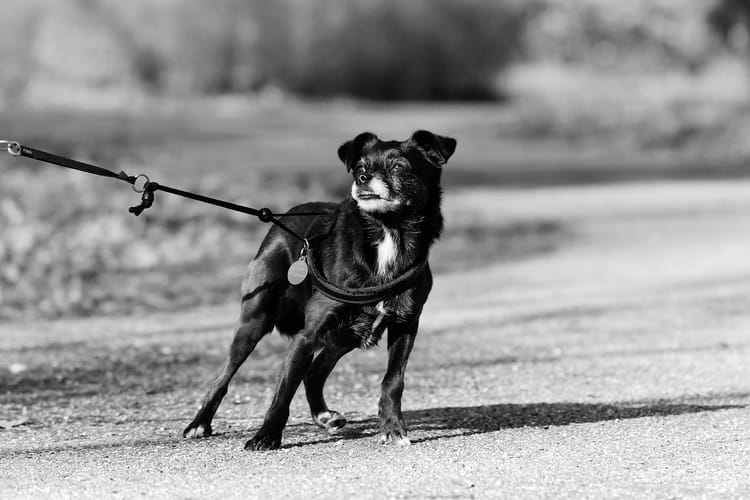Make sure your dog focuses anywhere you go + PDF handout

I used to be a pet sitter and dog walker. There were two dogs in particular, we'll call them Roxy and Rex, who I took on outings to busy places where there were people and other animals. When I first started walking Roxy and Rex, I was frustrated because they would always get distracted by their surroundings, tugging at the leash and sometimes lunging at squirrels and other dogs. I knew I had to start training them to pay attention in new environments – it was a safety issue as well as a training one! (Want to train this yourself? Keep reading or scroll to the bottom to download the PDF handout!)
Every time we went on a walk, I had a plan of action. As soon as we arrived at our destination I made sure to feed both dogs as soon as they got out of the car. This taught them to pay attention to me as soon as their paws were on the ground, rather than scan the horizon for something to chase.
I had to make sure the treats I used matched the environment. If the new surroundings are too distracting or the treat wasn't high-value enough, I had to adjust one or the other.
From there, I shortened my leash to 3-4 feet and stood completely still behind the dogs. Soon one or both turned to look at me, wondering what I was doing. I immediately rewarded this behavior with a few treats, took a step sideways and waited again. I would do this at least five times, then we took the world's shortest walk: in a small circle about 10 feet across. At any point on the circle that they paid attention to me, I fed. If not, we've arrived back at the car and I stood behind them again, until they looked at me and I could reward them.
After several days of this routine, the results were clear: both Roxy and Rex were attentive and no longer a safety hazard. You can also train your dog to pay attention to you in new environments, rather than hang out on the end of the leash and ignore you. Start by setting your dog up for success from the very beginning, following the steps above.
Start working in lower-distraction environments at first, and gradually increase the level of distraction as your dog learns. Only work in one or two locations per day, keeping the training sessions short: Don't continue on a long walk after training and hit "reset" on all your hard work!
Repeat this training in as many locations as you can, gradually extending your circles, or walking in straight lines out and back, gradually lowering the amount of food you give your dog for checking in to every five minutes or so.
With a few weeks of consistent training and limiting your outings at first until your dog learns to check in, you'll be on real exploratory walks again. You can use a release cue like "Go sniff!" or "Go play!" to let your dog know you aren't going to be feeding check-ins for a few minutes.
Congratulations! You've just taken the first steps to teaching your dog to focus in new environments. By following these simple tips and applying them consistently, you can help your four-legged friend stay focused in any situation. If you'd like more information or want a handy PDF guide to refer back to, subscribe below and receive an exclusive handout of how to train your dog to pay attention in new places -- it's the perfect way to kick start your pup's success!




